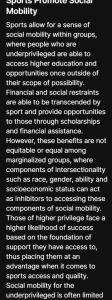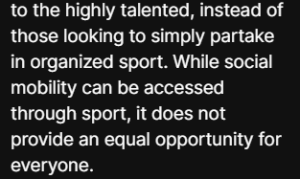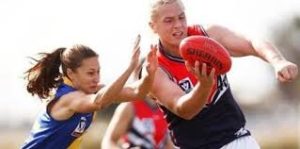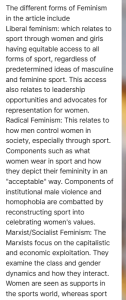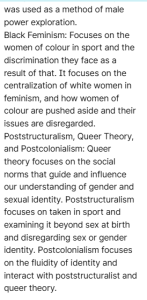1
Section One: The Fundamentals
A) What do we know about sport? What are common assumptions we make about sport and society?
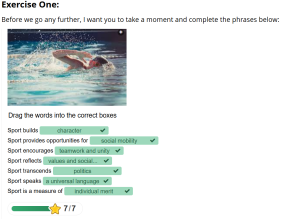
|
|
Exercise 3: Notebook prompt
What are some other metanarratives about sport that you are familiar with? Find an image or video clip or draw something yourself that captures this idea…
So what? Why does any of this matter? Does it matter? As something we grow up with – live with – play through – we don’t often interrogate the meanings of sport, and perhaps we don’t want to.
But being aware of these assumptions and metanarratives is especially important, I would argue, because of the centrality of sport to our everyday lives, the role that sport plays in shaping our childhood and worldviews and….. [finish that thought]
| Another metanarrative I am familiar with within sport is the exceptionality of women in sport, and pointing out women’s achievement within a male dominated space. While it does promote the idea of deconstructing barriers and the limitations women face in the realm of sport, it also reinforces the idea that women competing against men is an exception or special case, instead of normalizing it into the status quo or norm. Having strong female figures in sport is important to act as role models and as figures of achievement, but their regard should transcend past their gender and implement them alongside other athletes.
…How these metanarratives impact our childhood perceptions and worldviews for the rest of our lives. As stated within my previous response about women’s exceptionality in sport, it places women at a stage of consistently breaking barriers to be implemented in a space that frequently disregards them. Instead of having their space in sport be normalized, it is instead idealized when women athletes have achievements or exceptional stats. This barrier then works against women in sports in a way that requires them to work twice as hard to get half of the recognition male athletes get. By understanding not only this metanarrative, but also the other core elements of sports, it can help us understand how we conceptualize the idea of sports and who and how people are included in them. The ideas of overcoming adversity and the pursuit of excellence are components that contribute to how we place value on different sports and athletes, and understanding this influence can allow us to reflect on their impact on our more broader worldviews through how we place regard, recognition and reward onto certain things, behaviours and actions.
|
B) What is social justice?
Exercise 4: Padlet Prompt
Think back to the last section and try to look at some of the ideas we discussed differently. How might sport and social justice actually co-exist?
Record any images, video clips, or gifs you added to the padlet and identify a point of intersection between sport and social justice (can be an issue or a barrier or a debate or something you would like to explore in more depth in this course) . Screenshot or paste in your response below.
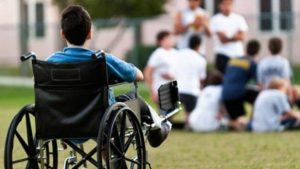
Access and Opportunity In many cases, sports opportunities and access to sports activities can be limited to specific groups of people who possess certain aspects that are catered to in a sports setting. For example, people with disabilities, differing sexual orientations (such as gay men), and women are not immediately catered to in a sports atmosphere or within a social sports group. Gay men face ridicule and othering due to their sexual preferences, where sport is seen as a widely male dominated field. Further, women’s sports abilities are seen as less adept and talented in comparison to men, where they are routinely met with disregard or ignorance. In these cases, women and people of differing sexual identities face different opportunities and accessibility when it comes to sports due to the surrounding broad male dominated sports culture. The bullying and ignorance faced by these marginalized groups can lead to them feeling less confident when participating in sports, and less inclined to attend sports events as a whole. Moreover, issues of SES operate as a barrier to sports access due to the cost of participation and equipment. These issues faced by those of differing genders, sexual orientations and ability thus face inequitable and unequal treatment, access and opportunity to sport. This then is related to social justice through the issues these people face, as their identities and experiences are disregarded and go widely unacknowledged or fixed as a whole. The systemic inequities within the commercialization and commoditization of sport results in access and opportunity for sport to be a social justice issue that requires work and structures of unlearning to begin to form an equitable playing field for all intersectionalities.
|
C) Social Justice Reading
(note: this activity is optional!)
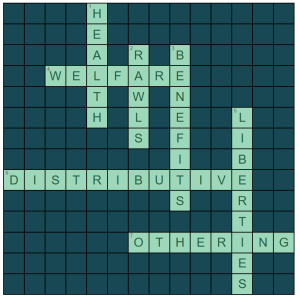
D) KINESIOLOGY AND SOCIAL JUSTICE
Exercise 5:

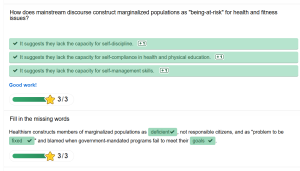

Exercise 6:
What are the implications of bodies-at-risk discourse and the refusal to understand the health gap from a social justice perspective, according to the authors of this article?
|
The implications of the “bodies-at-risk” discourse within the article encompass the idea that this model reinforces and upholds the superiority and accepted norm of white, upper-middle class, able-bodied structures of health, definitions of healthy living and health practices. These outlines are determined from the skewed ability that white, upper class families have to access methods physical activity, such as the gym, walking trails and equipment to work out at home, along with a heightened ability to consume healthy foods and have an overall healthier life style. This established norm stemming from white culture and white ideals then others and excludes marginalized groups, and determines their level of health and wellbeing from an extrospective cultural view. Thus in return, minority groups are then seen as “problem areas”, where their unequal and inequitable access to healthy foods, methods of physical activity and overall decreased overall health and lifestyle practices is disregarded, and their level of health and wellbeing is established from a white culture perspective. Instead of focusing on why these groups are unable to access equal opportunities to healthy lifestyle opportunities, the research conducted on marginalized communities health status is limited to qualifying them as “deficient”, “under-achieving” and “at risk”. By ignoring the social justice perspective of the health gap between groups, marginalized communities are then held to a standard that they are systemically unable to uphold. Instead of acknowledging the privilege within white culture, and what opportunities are open and more accessible for white upper-middle class populations, lower class and ethnic minority groups are labelled as lazy, lacking self responsibility and self management. Looking at this issue through a social justice lens, the minority marginalized groups face an unequal opportunity within society, and their health and well being is undervalued and disregarded as being deficient. Rather than adapting a white centric cultural lens when analyzing the health deficits between groups in society, it is necessary to adopt a more broadened and encompassing idea of the social structure and cultural norms present currently and how their influence results in unfair and unjust guidelines for marginalized groups to abide by. Overall, the article examines the present “bodies-at-risk” implications on minority groups, and how the dominant culture in society that determines health level stems from white influence. The privilege and opportunities available to white people in society are then disregarded when applying these guidelines onto minority groups, and uphold them to the same standard as their white counterparts. As a result, when marginalized groups fail to meet these unfair and unequal guidelines due to systemic barriers, they are then blamed by the government in charge of creating programs. Further, they are labelled in a negative light, such as being “lazy” and lacking self responsibility. By ignoring the social justice implications on the health gap, marginalized communities are expected to uphold a standard of health, wellbeing and lifestyle practices that they are systemically at a disadvantage of achieving, ultimately leaving them to fail or at the least at a severe disadvantage.
|
Section Two: Sport Feminism
Exercise 7: Notebook Prompt
What is feminism? What does it mean to you? Choose one of the images below and explain how it captures your understanding of feminism (or find one that does speak to you and paste this into your pressbook with an explanation of why it matters to you.
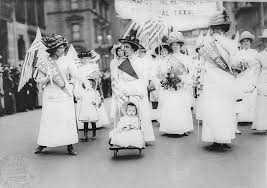
This image capsulates my idea of feminism because it is an image of women during the suffrage movement and working as a collective whole to accomplish and obtain a right to vote. This image supports my idea of feminism in many ways, first off, it captures my understanding of feminism as a means of working alongside women who face the same issues as you and collectively work towards achieving a goal that not only benefits your generation, but also benefits generations of women to come. The suffrage movement showed the power of numbers and collective efforts that feminism can encapsulate to combat women’s issues. While the women’s suffrage movement in the regards of collective action and collaboration towards a common goal from a marginalized groups is important and shouldn’t be disregarded, it also has to be understood that this movement had white women’s ideals and rights in mind, where women of colour were not included in their efforts. In many cases currently, feminism in my opinion can become held up and limited to the struggles, issues and limitations that white women face solely, where components micro feminism such as not shaving your body hair, hating men as a reaction to their treatments towards them focuses on minimal issues that only a small population of women face. This focus on white women feminism distracts from the wider more implicative issues women of colour face within and outside western countries, where the rights we take for granted in the west are still a daily struggle for women in the global south and across the globe. The women’s suffrage movement, while being a key point in feminist history, also upholds this negative focus on white women’s rights and liberties and frequently forgets or disregards the issues women of colour face. As a whole, the image encapsulates not only my ideas of collective action, and women’s efforts to fight against inequality as a basis of my understanding of feminism, it also inadvertently upholds the past and current issues of exclusionary feminism and the frequent prioritization of white women’s rights and issues over the issues faced by women of colour in the west and across the globe. Overall, while I see historical and present day feminism as a foundational peice towards gender equality and we would not be where we are currently without the efforts of past women, the focus and prioritization of white women’s rights is a past and contemporary issue that white feminists across the global north must acknowledge when engaging in feminism and calling themselves a feminist, as if they only focus on issues affecting white women, they are not a complete or wholehearted feminist, as I define feminism as concern, action and fighting for the rights of all women across the globe, not just the immediate issues you face in your racial group.
|
Exercise 8: Notes Prompt (optional)
NB: Cornell notes is a great resource that teaches effective notetaking. Unfortunately, our system can’t save notes taken in the H5P app, so this is fully optional.
Exercise 9: Crossword Activity
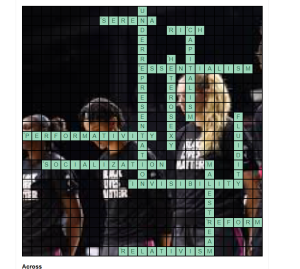
Exercise 10: Padlet Prompt

|
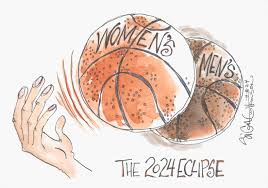
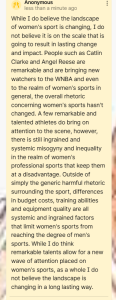
|

